Su mensaje ha sido enviado.
Procesaremos su solicitud y nos pondremos en contacto con usted lo antes posible.
El formulario se ha enviado correctamente.
Encontrará más información en su buzón.
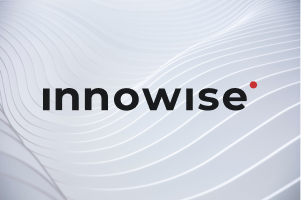
Seleccionar idioma
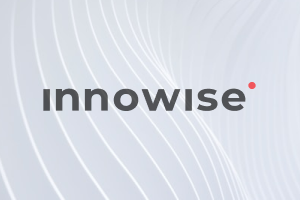

¿Alguna vez has tenido problemas con proyectos de software que constantemente se salen del presupuesto, incumplen los plazos o no cumplen las expectativas de los usuarios? Tal vez su equipo tuvo dificultades para definir los requisitos en primer lugar, o las responsabilidades se dispersaron, la comunicación se retrasó y el progreso se estancó. No es el único: estos problemas son muy comunes, pero hay una forma probada de afrontarlos.
Eso es exactamente lo que el SDLC (ciclo de vida del desarrollo de software) está diseñado para resolver problemas. Ofrece un enfoque estructurado y repetible para planificar, construir y entregar software que realmente funciona.
En este artículo, explicaré qué significa realmente el SDLC hoy en día, cómo le ayuda a clarificar su proceso desde el primer día y cómo puede ayudarle a entregar software de forma coherente, más rápida y con muchas menos sorpresas.
El ciclo de vida del desarrollo de software (SDLC) es una ruta estructurada para sus proyectos de software, que divide los procesos complejos en pasos manejables, desde el concepto inicial hasta la implantación y el soporte continuo. En cada fase se detallan las tareas específicas, se asignan funciones claras y se establecen resultados tangibles, de modo que todas las partes implicadas estén de acuerdo y conozcan su trabajo.
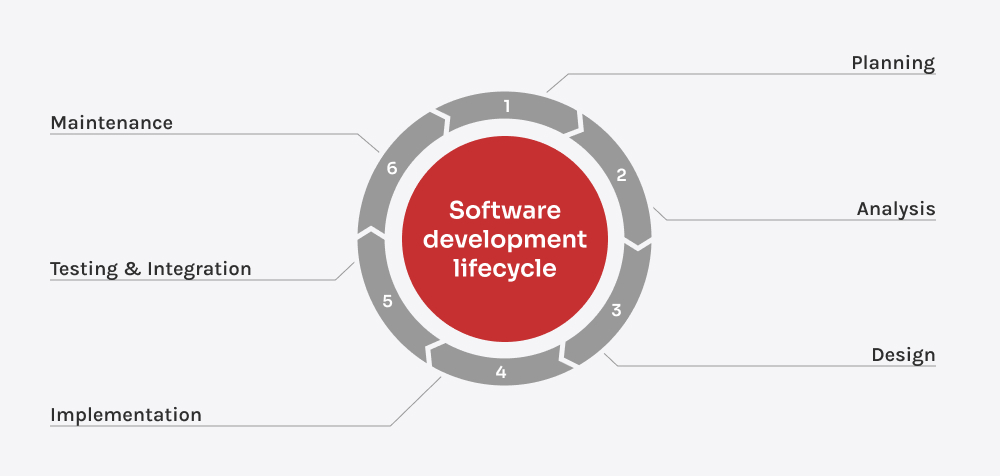
El software no nace en línea recta. Evoluciona a través de una serie de fases de SDLC intencionadas. El SDLC guía ese viaje, ayudando a los equipos a mantenerse alineados, reducir el riesgo y dar forma a productos que realmente satisfagan las necesidades de los usuarios y de la empresa.
Esta es la fase de "por qué estamos haciendo esto". En ella los equipos definen la finalidad, el alcance, los objetivos, el presupuesto y los plazos de entrega del proyecto. Los analistas de negocio y los gestores de proyectos colaboran estrechamente con las partes interesadas para identificar los puntos débiles y esbozar una estrategia de alto nivel. Lo que se hace aquí: entrevistas con las partes interesadas, estudios de viabilidad, evaluaciones de riesgos y planificación de recursos.
Una vez aprobado el proyecto, el equipo pasa a definir qué debe hacer realmente el software. El primer paso consiste en recabar información de todas las partes interesadas para comprender tanto las necesidades de la empresa como las expectativas de los usuarios. Esto lleva a la documentación de los requisitos funcionales (lo que los usuarios deben ser capaces de hacer) y técnicos (cómo debe comportarse el sistema bajo el capó). Como último paso, el equipo revisa y perfecciona los requisitos antes de seguir adelante.
En la fase de diseño, el equipo convierte los requisitos básicos en un plan práctico para construir el software. Comienza con un diseño de alto nivel, en el que se traza la arquitectura del sistema, los módulos principales, el flujo de datos y cómo interactuarán las distintas partes. A partir de ahí, se profundiza en el diseño de bajo nivel, detallando la lógica, la estructura y el comportamiento de cada componente, incluidos los diseños de las bases de datos y los algoritmos clave. Los diseñadores suelen crear wireframes o prototipos en los que se puede hacer clic para explorar el recorrido del usuario y detectar problemas de usabilidad desde el principio. Esta fase elimina las conjeturas de los desarrolladores y ayuda a evitar costosas repeticiones al sacar a la luz los problemas técnicos antes de escribir el código.
En la fase de desarrollo, el software empieza a tomar forma a medida que los desarrolladores traducen los diseños en código operativo. Construyen la aplicación pieza a pieza, a menudo en ciclos cortos y específicos que permiten pruebas, comentarios y ajustes frecuentes. Los desarrolladores no se limitan a escribir código, sino que toman decisiones arquitectónicas deliberadas y estructuran las funciones para mantenerlas a largo plazo. A lo largo del proceso, los desarrolladores se mantienen en estrecha sincronía, revisando el trabajo de los demás, refinando la lógica y resolviendo problemas en colaboración para mantener el producto alineado tanto con la visión técnica como con los objetivos empresariales.
Por muy pulido que esté el código, el software no probado es una bomba de relojería. En la fase de pruebas, el producto se pone a prueba antes de llegar a los usuarios. Suele empezar con las pruebas del sistema, que verifican si toda la aplicación funciona como una unidad. Luego vienen las pruebas manuales, en las que los ingenieros de control de calidad simulan el uso en el mundo real y los casos extremos. Por último, intervienen las pruebas automatizadas para cubrir tareas repetitivas a escala, garantizando la estabilidad tras cada nueva implantación.
El despliegue es el momento en que el software sale del laboratorio y entra en el mundo real. El equipo pone el producto a disposición de los usuarios -ya sea en un gran lanzamiento o gradualmente a través de versiones escalonadas- mientras supervisa de cerca su comportamiento en el entorno real. Esta fase implica la configuración de la infraestructura, la creación de canales de despliegue automatizados y la preparación de estrategias de reversión en caso de que algo salga mal. Los desarrolladores, los ingenieros de DevOps y el departamento de control de calidad suelen trabajar codo con codo para facilitar el proceso de lanzamiento, solucionar problemas de última hora y asegurarse de que todo funcione exactamente como estaba previsto desde el primer día.
Una vez que el software está operativo, empieza la verdadera prueba. El equipo supervisa el rendimiento, responde a los comentarios de los usuarios y soluciona los fallos o vulnerabilidades que surgen en condiciones reales. Y lo que es igual de importante, los equipos de soporte trabajan en primera línea, recabando opiniones de los usuarios, mientras los desarrolladores se ocupan de los ajustes técnicos y las mejoras a largo plazo. El software se convierte en un producto vivo, constantemente perfeccionado para seguir siendo relevante y fiable.
La forma de crear software es tan importante como lo que se está desarrollando. Los modelos de SDLC estructuran el caos y ayudan a los equipos a navegar por objetivos cambiantes, plazos ajustados y el constante tira y afloja entre calidad y velocidad.
El modelo Waterfall es un enfoque lineal y secuencial. Consta de distintas fases: Requisitos, Diseño, Implementación, Pruebas, Despliegue y Mantenimiento. Cada fase debe completarse antes de pasar a la siguiente. No hay vuelta atrás una vez terminada una fase. Este modelo funciona bien cuando los requisitos están bien definidos y es poco probable que cambien.
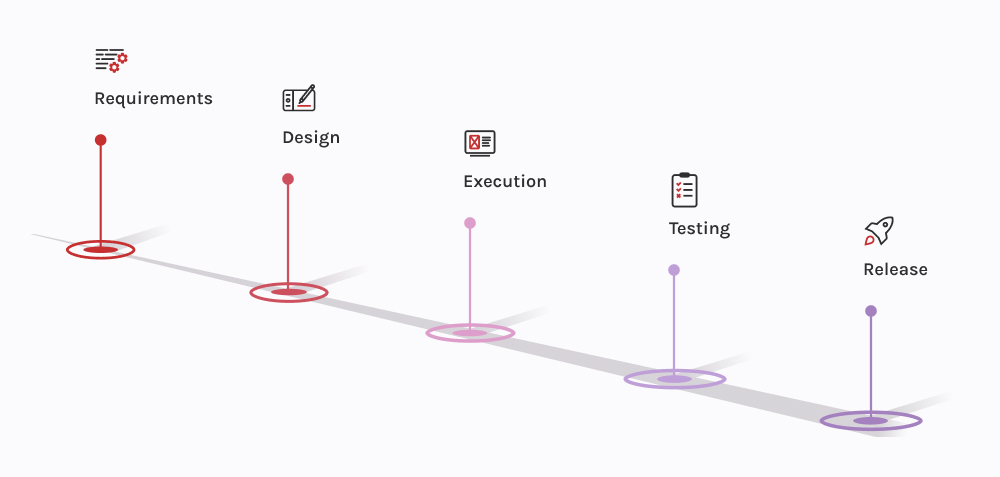
El modelo Agile divide el proyecto en partes pequeñas y manejables llamadas sprints, que suelen durar entre 2 y 4 semanas. Durante cada sprint, los equipos desarrollan, prueban y recopilan información para introducir mejoras. Agile hace hincapié en la colaboración con el cliente y la flexibilidad, permitiendo cambios incluso en fases avanzadas del desarrollo. Los marcos ágiles más conocidos son Scrum y Kanban. Es ideal para proyectos en los que los requisitos cambian con frecuencia, como el software con actualizaciones periódicas.
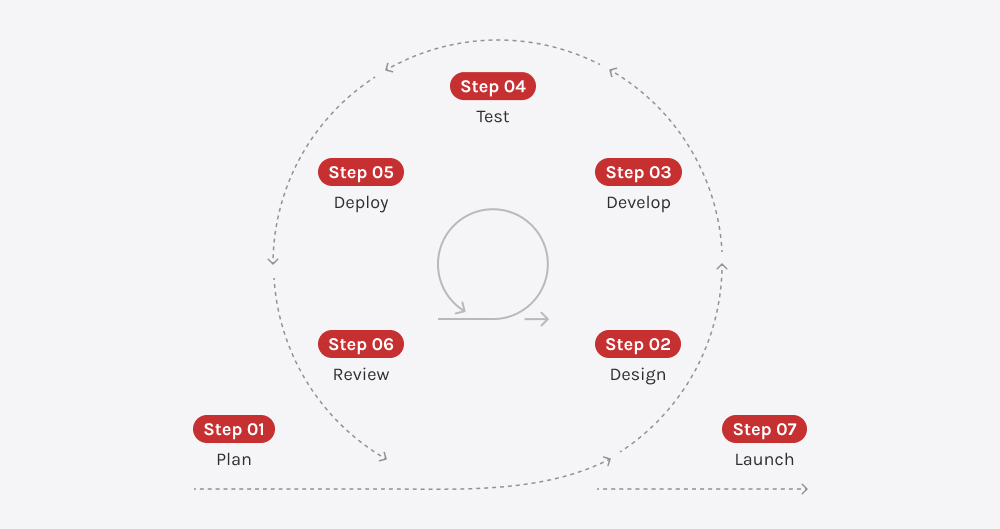
El modelo iterativo permite crear software paso a paso. Se empieza con una versión sencilla del producto y se va mejorando a lo largo de varias rondas. En cada iteración, el equipo planifica, diseña, codifica y prueba nuevas funciones o mejoras. Es una buena opción cuando el alcance del proyecto no está totalmente definido al principio, porque se puede adaptar y mejorar sobre la marcha.

El modelo en espiral combina el desarrollo iterativo con la evaluación sistemática de riesgos. Consta de cuatro fases principales: Planificación, Análisis de Riesgos, Ingeniería y Evaluación. Cada bucle de la espiral aborda un conjunto de requisitos, con evaluación de riesgos en cada fase. El modelo repite el proceso, añadiendo gradualmente más funciones. Se utiliza en proyectos grandes, complejos o de alto riesgo, como los aeroespaciales o los sistemas de software críticos.
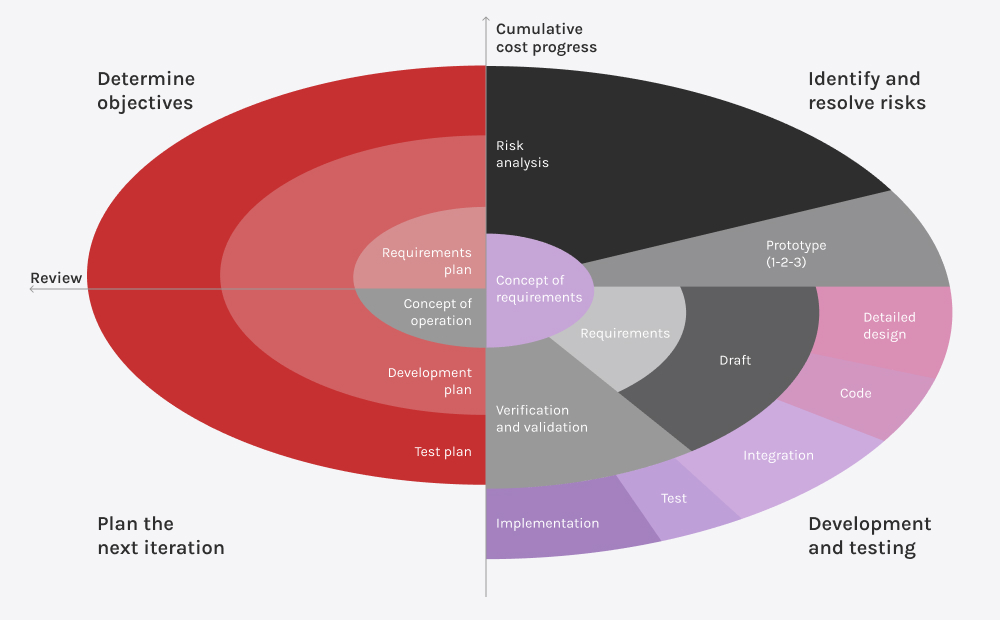
Este modelo es similar al de Waterfall, pero integra pruebas exhaustivas en cada fase. Tras completar una fase de desarrollo, sigue la fase de pruebas correspondiente. Esto lo hace más fiable para proyectos en los que la precisión y la validación son cruciales.
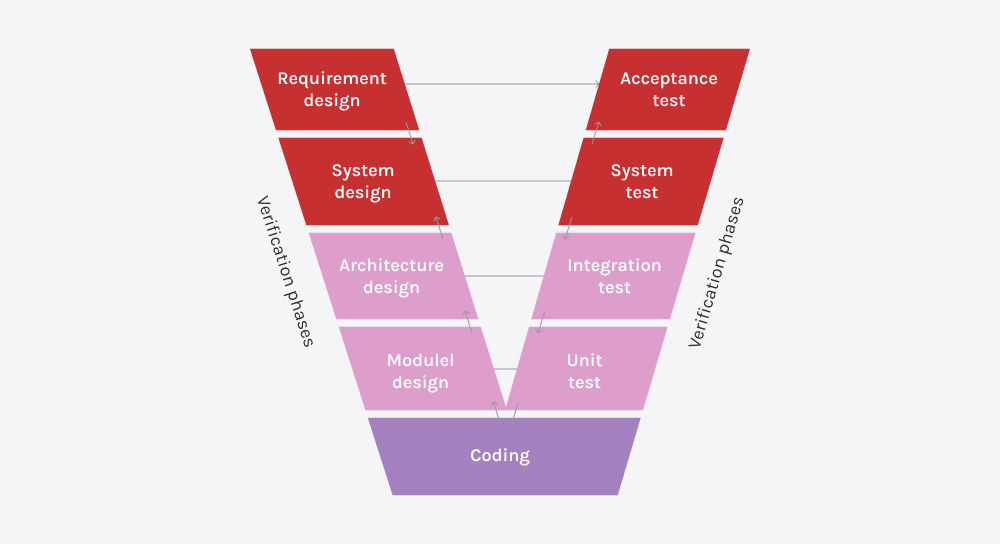
El modelo Big Bang implica comenzar el desarrollo sin demasiada planificación. Los desarrolladores crean el software basándose en requisitos limitados, a menudo con el objetivo de crear un prototipo rápido. Este modelo es de alto riesgo y puede dar lugar a resultados impredecibles, pero es adecuado para proyectos pequeños con requisitos sencillos o software experimental.
En DevOps es un enfoque que combina el desarrollo de software (Dev) y las operaciones de TI (Ops) para mejorar la colaboración, la velocidad y la eficiencia. Se centra en la automatización de tareas repetitivas como las pruebas, la integración, la implantación y la supervisión.

La elección del modelo de SDLC adecuado puede marcar la pauta de todo el proyecto. No se trata de un modelo único, sino que la mejor opción depende de factores como el tamaño del proyecto, la complejidad, el presupuesto, los plazos, la experiencia del equipo y el grado de implicación de las partes interesadas.
Veamos cómo emparejar diferentes metodologías de SDLC con las características típicas de un proyecto:
| Factor | Modelos de SDLC recomendados |
| Requisitos claros | Cascada, modelo V |
| Cambio de requisitos | Ágil, Iterativo |
| Pequeños proyectos | Cascada |
| Proyectos grandes o complejos | Ágil, Espiral, DevOps |
| Interacción frecuente con los clientes | Ágil, Scrum |
| Mínima interacción con el cliente | Cascada, modelo V |
| Presupuesto y calendario fijos | Cascada, modelo V |
| Presupuesto y calendario flexibles | Ágil, Espiral |
| Se necesitan cierres rápidos | Ágil |
| Plazos de desarrollo más largos | Cascada, modelo V |
| Mantenimiento continuo | Ágil, DevOps |
Adoptar un enfoque de ciclo de vida de desarrollo de software (SDLC) puede cambiar realmente la fluidez de sus proyectos de software. El SDLC ayuda a que todo el proceso sea más manejable y eficaz:
En Innowise, hemos visto de primera mano cómo el software ciclo de desarrollo (SDLC) facilita la vida a nuestros equipos y clientes. Al seguir las mejores prácticas del SDLC, nos mantenemos en sintonía con todos los implicados, definiendo claramente los objetivos y las expectativas desde el principio. Esto se traduce en menos sorpresas, procesos más fluidos y resultados predecibles en cada etapa, desde la planificación y el desarrollo hasta las pruebas y la implantación.
¿Piensa actualizar su propio enfoque? Eche un vistazo a nuestra página de servicios y descubra cómo podemos ayudarle a aportar claridad y eficacia a su próximo proyecto de software.
Dmitry lidera la estrategia tecnológica detrás de las soluciones personalizadas que realmente funcionan para los clientes, ahora y a medida que crecen. Aúna la visión global con la ejecución práctica, asegurándose de que cada construcción sea inteligente, escalable y alineada con el negocio.
Valora este artículo:
4,8/5 (45 opiniones)






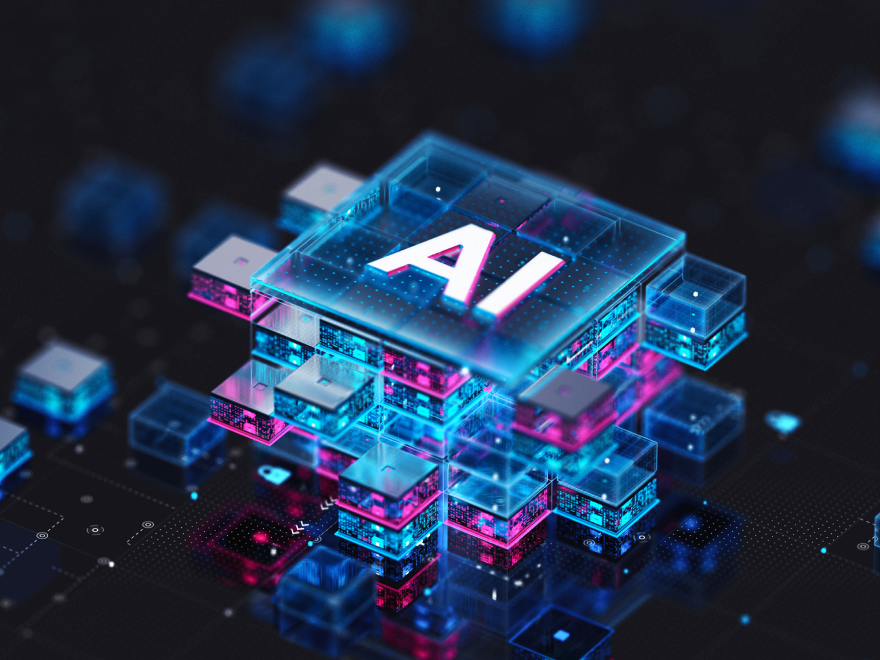





Su mensaje ha sido enviado.
Procesaremos su solicitud y nos pondremos en contacto con usted lo antes posible.

Al registrarse, acepta nuestra Política de privacidadincluyendo el uso de cookies y la transferencia de su información personal.